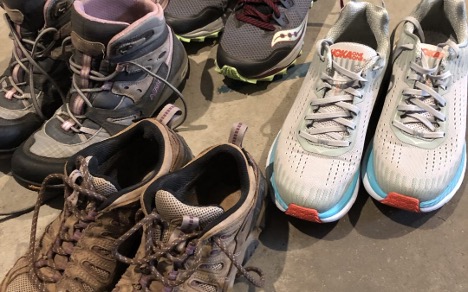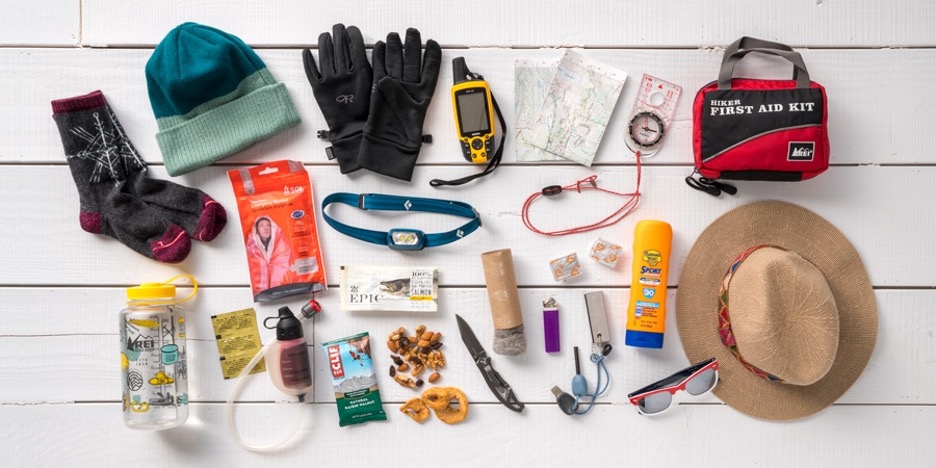
Welcome to Part 2 of Camping Merit Badge. If you need to go to Part 1 or Part 3 of Camping merit badge, please use the horizontal bar below and click on respective part
Requirement #3
Make a written plan for an overnight trek and show how to get to your camping spot by using a topographical map and one of the following:
a) A compass
b) A GPS receiver
c) A smartphone with a GPS app
(If a GPS-equipped device is not available, explain how to use one to get to your
camping spot)
To complete this requirement, you may use the Scout Planning Worksheet at http://troopleader.org/wp-content/uploads/2016/03/512-505_16_Wksht_WEB.pdf
Being able to follow a map is an extremely important skill. Knowing how to get around while camping will serve you dividends even beyond camping. A strong directional sense can you help you in getting around cities as well as the woods.
To read a map, you first need to orientate yourself with the map. Use a directional source such as the sun (rises in the east and sets in the west) or the North Star to find your cardinal directions. If neither of those are available use a landmark such as a hill or river to orient yourself with the map. Once you know which direction is which on the map and in the real world, check the scale of the map so you know how far you can expect to travel to reach your destination. The orienteering merit badge will help you master this skill.
For the second half of this requirement, I recommend using a GPS app on your phone as you will likely already be familiar with it. Using googles maps, you can input exact coordinates through the search bar as well as using 2 to plot out your course.
Create a plan that involves where you’re going to camp, how you’re going to get there, how far you can travel by car and how far you will have to hike, etc. The resource listed in the requirement will be a great starting point for this.
Requirement #4
Do the following:
a) Make a duty roster showing how your patrol is organized for an actual overnight
campout. List assignments for each member.
b) Help a Scout patrol or a Webelos Scout unit in your area prepare for an actual
campout, including creating the duty roster, menu planning, equipment needs, general
planning, and setting up camp.
These requirements can both be easily done within your own troop. Take this opportunity to speak with a troop leader and familiarize yourself with how your troop tends to handle their duty roster. A duty roster is a way to divide up labor and ensure everything does their part on an outing. Some jobs at camp may include, Managing the fire, cooking meals, cleaning up after meals, camp cleanup, or whatever is necessary for your trip. A sample duty roster from the BSA can be found here
On your next campout, ask your patrol leader for help completing this requirement.
This time, you’ll be in charge! After your patrol has met to plan the next campout, note down each of your patrol members’ duties. That’s your duty roster. Make sure to pack it in your bag, because you’ll be referencing it during your upcoming campout.
During the troop meeting right before your campout, you should also be able to complete requirement 4b by helping plan the menu, evaluating your patrol equipment needs, and helping everyone get organized.
Requirement #5
a) Prepare a list of clothing you would need for overnight campouts in both warm and
cold weather. Explain the term “layering.”

Being properly clothed is extremely important while camping. Clothing is your first layer of protection against the weather and any hazards you might face. Your clothing will also depend on the weather. For warm campouts, make sure you bring light breathable clothes to help prevent head related illnesses. For cold campouts, bring enough warm clothes such as sweatshirts as well as t-shirts and other under layers. Layering is a practice of weather multiple layers of clothes, such as a t-shirt, long sleeve and sweatshirt, to help stay warm and protect yourself against the environment. As a general rule, I pack according to the following list:
- T-Shirts – Number of nights +1
- Sweatshirts – for warm weather 1-2, for cold weather 1 for every 2 nights camping
- Shorts – only in warm weather – Number of nights +1
- Pants – for warm weather 1-2, for cold weather – Number of nights +1
- Socks and Underwear – Number of nights + 3
Make sure you consult your specific needs for your campout and always double check your list.
5b) Discuss footwear for different kinds of weather and how the right footwear is
important for protecting your feet.

When determining the right footwear to take on a camp, the main thing you should consider is the environment you’ll be heading into. Does the weather report predict rain? How cold will it get at night? Will it be sunny so that my shoes can dry if they get wet? These are all very important questions to ask yourself when choosing the right camping footwear!
When deciding on what footwear you’ll pack for camp, I’d highly suggest speaking to your Patrol Leader, SPL, or Scoutmaster and asking them their opinion. It’s likely they’ve been on the camp before and can give you some great pointers! To serve as a general guideline though, below are the best types of footwear for different weather conditions:
- In wet, humid environments: You’ll need to pack light shoes that can be dried quickly and are resistant to moisture damage.
- Slow-drying shoes can mean an increased chance of blisters and foot infections.
- I’d suggest packing a few pairs of extra socks as well.
- In icy environments with snow: you’ll need warm, water-resistant boots with strong traction.
- Slipping and cold feet will probably be your biggest concerns.
- If you’ll be hiking in the snow, I’d suggest using crampons (Amazon link to show you what crampons look like).
- In cold, damp environments: You’ll want to pack insulated, warm, waterproof shoes that will stand up to the outdoor conditions.
- Sturdy waterproof boots are ideal for these kinds of conditions, as they’ll keep your feet dry and warm.
- In warm, mild environments: A light, breathable pair of canvas or hiking shoes will be fine.
- If your troop allows it, you may also want to bring a pair of slippers or sandals to use around camp so that you’ll have a change of footwear if your feet start to get too hot.
Another thing to consider when choosing the right footwear is the type of physical activity your troop will be doing. Will you be running, playing sports, or hiking? If so, you’ll need supportive shoes that can stand up to these tasks
5c) Explain the proper care and storage of camping equipment (clothing, footwear,
bedding).
Bringing the right things camping is only the beginning. You also need to make sure you take proper care of all your equipment. The biggest thing to remember is keep your things dry! Wet clothes, sleeping bags, shoes or tents will all make your camping experience miserable. Never leave anything you don’t want wet outside your tent overnight. Water is your enemy when camping and it will do its best to find a way to thwart your fun. You must be proactive as let me tell you, things get wet a whole lot faster than they dry.
5d) List the outdoor essentials necessary for any campout and explain why each item is
needed.
Your essentials will be varying based on the specific needs of your trip but here is a
pretty good starting point.
- Clothes – Discussed above.
- Sleeping Materials – Depending on the length and location of your camp, this
could vary from a simple sleeping mat to a full-blown cot. Also make sure you
bring a sleeping bag warm enough for the coldest forecasted night. - Proper Sized Tent – As a good rule of them, I always plan for gear in tents to
take up the same amount of space as each person. So far example if I was
camping with three people, I would bring a six-person tent to fit three people plus
their gear. - Cooking Materials – You’ve got to eat while camping. Make sure that you bring
everything you will need to cook the full menu you prepared and that everything
you’re brining works. - Flashlight – It’s going to get dark, and you need to see. Make sure you carry
your flashlight with you if you plan to not be heading back to your tent before dark
when going out. - Pocketknife – A pocketknife is an invaluable tool that will serve your ever
purpose when used properly. Make sure it is sharp, and you know how to use it - Water Bottle – It is extremely important to stay hydrated while camping.
- Sunscreen and Mosquito Spray – Staying protected from the sun and bugs will
make you experience much more enjoyable. - Matches or Lighter – Being able to start a fire is your ticket to warm nights,
warm food as well as protection from bugs. Make sure you have earned your
Firem’n Chit and take proper precautions to keep your fire safe

5e)Present yourself to your Scoutmaster with your pack for inspection. Be correctly
clothed and equipped for an overnight campout.
A great time to get this requirement is before a troop campout or summer camp. You should hopefully already have everything you need for camping and your scoutmaster will already be there..
Once you’re ready to continue to Part 3 of the Camping merit badge or would like to go back to Part 1, please use the horizontal bar below and click on respective part


Pingback: Camping Merit Badge Guide - Part 1 - Soar To Eagle
Pingback: Camping Merit Badge- Part 3 - Soar To Eagle